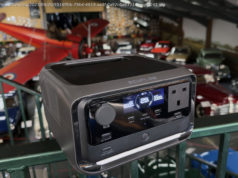Platform fka Java EE gets new governance model, hopes for bigger community
The Eclipse Foundation has today released the new governance model for Jakarta EE, with an emphasis on creating a cloud native, code-first and community-led project that is faster and more innovative.
Oracle decided to hand over full control of Java EE to the open-source foundation last year – a move that was welcomed as a positive step for the future of the platform, despite Big Red’s massive strop over the name .
Now hoping to move on from the branding debacle, Eclipse has published the new open source governance model for the newly minted Jakarta EE, which aims to inject some energy into the platform.
“This is a chance to give a platform that has been very important for many years a chance at a second life,” Mike Milinkovich, executive director of the Eclipse Foundation told The Register .
“It’s always been single vendor, and always been specification-first, which I think [has] helped slow down the pace of innovation,” he said.
Although the JCP (Java Community Process) has done a good job of being open, the switch to a multi-vendor, community-led project that is code-first will “unlock” development more quickly, he said.
As part of this, the Jakarta EE Working group – made up of vendors including Fujitsu, IBM, Oracle, Payara and Red Hat, along with open-source developers – is aiming at faster releases.
The foundation said in a statement that “as scores of other hugely successful open source projects have shown, a consortium of vendors can drive acceleration at a much faster and sustainable rate than any single vendor or standards body”.
Under Oracle’s control, there were concerns that engineers were being funnelled into other projects. By the time Java EE 8 arrived in September 2017 – more than a year late – the enterprise edition hadn’t been updated for four years.
The top-level project managing the Jakarta EE codebase has committed to two releases in 2018 already, which will complete the transition from Java EE to Jakarta EE.
Milinkovich said that it was up to the community whether there would be two releases a year after that, noting that Java SE had pledged a faster release cycle, shipping every six months, but that the “adoption rate is quite low”.
He stressed, though, that “even if he had a fixed viewpoint”, it was up to the community to decide the right pace, which would be more clear after the transition was complete.
One of the reasons for the focus on more frequent releases is – as Bruno Souza, president of SouJava, put it – because this is required to meet “the challenges posed by distributed systems and cloud native applications”.
Indeed, a survey of 1,800 Java devs – also published today – found that 61 per cent wanted better support for microservices, and 57 per cent picked native integration with Kubernetes. Some 47 per cent said they wanted a faster pace of innovation.
The survey also found that a quarter of respondents expect to have more than 80 per cent of their applications running in the cloud in two years. The foundation put this down to organisations being more comfortable with deploying mission critical Java applications outside the traditional data centre.
However, around half said that less than 20 per cent of their applications were in the cloud at the moment. And while some 58 per cent of respondents said Java EE in its current form was suitable for the cloud, almost a quarter said it was unsuitable or extremely unsuitable.
“Obviously, migrating Java applications to the cloud is still very much a work in progress,” the foundation said.
But it added: “Of course, the community has not seen anything yet with Jakarta EE.”
Milinkovich was more measured, saying he was “cautiously optimistic” that the 24 per cent who said it was unsuitable would be persuaded.
“Developers, by nature, are ‘show me, don’t tell me’,” he said. “I honestly believe there are ideas in the pipeline that will be a bridge to make Java a first-class platform for cloud native… [but we’re] at least a couple of quarters away from being in a position to show them.”
The foundation hopes the new focus – along with lowered barriers to adoption – will boost the community, and encourage “an open process that more accurately reflect the needs of the wider community”.
Milinkovich added that the new model wasn’t just important for the technology – he noted that it is running “a lot of the critical infrastructure on our planet” but emphasised the benefits it will offer developers.
“It’s skills for the individual devs who are part of the Java EE developer community,” he said. ®
Sponsored: Minds Mastering Machines – Call for papers now open






